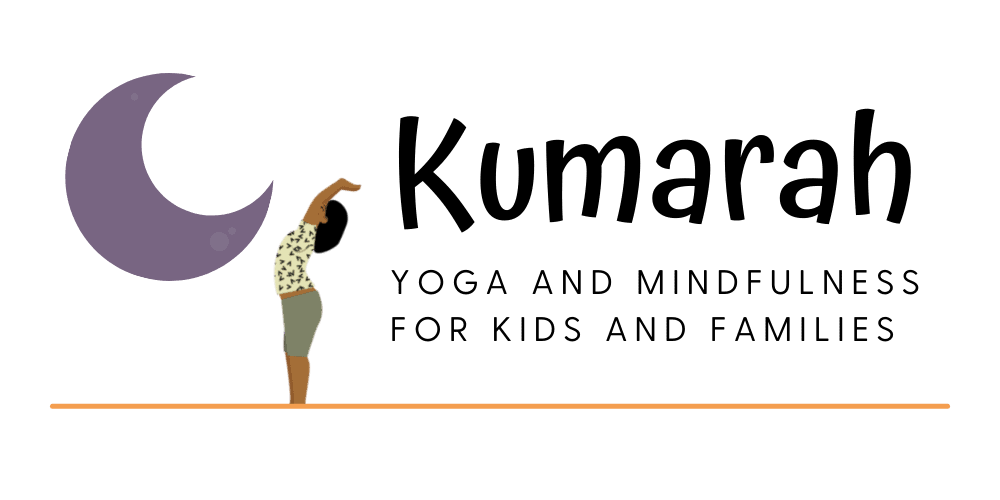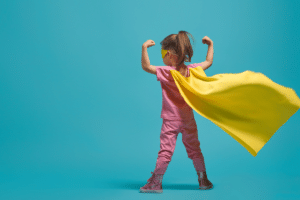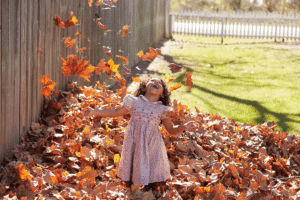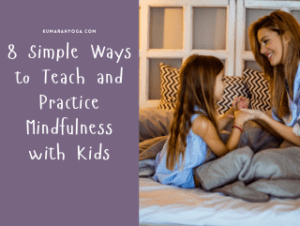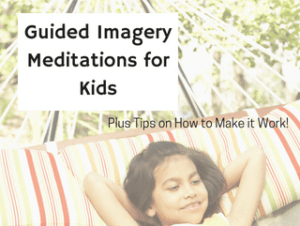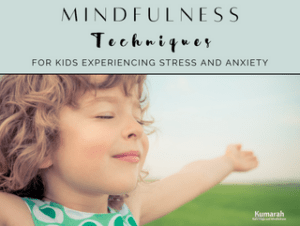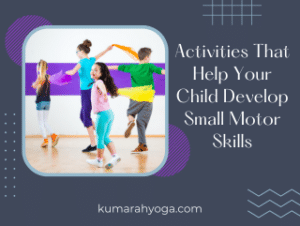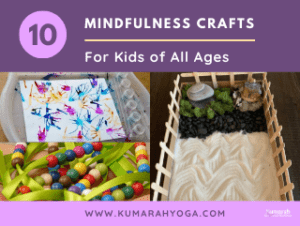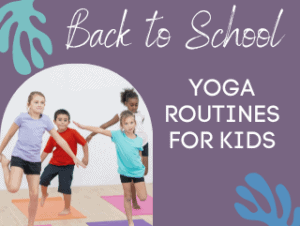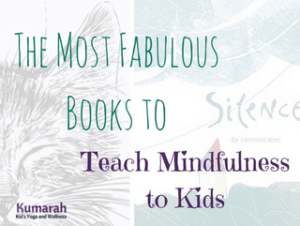In today’s fast-paced world, with distractions everywhere, teaching children the art of being mindful is more important than ever!
Mindfulness is all about being aware of the present moment, helping kids develop inner calm, focus, and emotional resilience. Pretty amazing, right?
Now, picture this: imagine your child calmly navigating through life’s ups and downs, with a sense of peace and strength. They are focused, have improved self-esteem, and even practice self-compassion.
Plus, it’s not as complicated as it may seem. We’ll break it down step by step, making it super easy for you to introduce mindfulness into your child’s life. Even kids with strong emotions can learn mindfulness skills in a few minutes.
And hey, have you ever wondered what mindfulness can really do for your child?
It’s not just about feeling calm and focused. Mindfulness can help boost their self-confidence, improve their relationships, and even enhance their academic performance.
So, let’s going to dive into the wonderful benefits of mindfulness for kids. We’ll share some engaging activities, and practical tips for parents, and debunk some common misconceptions. More detailed posts on these are found within the article and at the end!

What is Mindfulness?
Before we dive into the benefits of mindfulness for kids, let’s first understand what it is.
Mindfulness is the practice of being fully present and aware of the current moment without judgment.
It involves paying attention to our thoughts, feelings, and surroundings, with attention to detail, and leaving out the criticism. Noticing your surroundings instead of staying “in your head” constantly.

Is Mindfulness Any Different for Kids?
You might be wondering, is mindfulness any different for kids? The answer is yes and no.
In today’s world, where children are constantly bombarded with stimuli from technology and social media, learning mindfulness can help them slow down and find peace amidst the chaos, just like it does with adults.
It allows children to develop a deeper understanding of themselves and their emotions, leading to better self-regulation and emotional intelligence.
Mindfulness techniques are mostly the same for adults and children, but the approach may differ.
For younger children, mindfulness may involve more playful activities and games to keep them engaged. It involves teaching them about their five senses and even physical sensations as they discover the world around them.
As they grow older, they can start learning more formal practices like deep breathing exercises and mindfulness meditation.
The key difference is in how we communicate the practice of being mindful to children. It’s important to use simple, relatable language and make it fun for them.
Mindfulness Versus Meditation for Kids
While the terms “mindfulness” and “meditation” are often used interchangeably, they have distinct differences when it comes to children.
Mindfulness is a broader concept that encompasses being present in the moment and cultivating awareness, while meditation is a specific practice of training the mind to achieve mindfulness.
Meditation usually involves intentional breathing, practicing how to sit quietly, and simply watching your thoughts. Many kids will enjoy guided imagery meditation, but it can take time to learn the self-control of sitting still for a longer period.
For kids, it may be more effective to focus on introducing mindfulness techniques rather than traditional meditation, as it may be easier for them to grasp and incorporate into their daily lives.
Mindfulness exercises can be as simple as taking deep breaths, using mindful listening to specific sounds, or focusing on a specific object or sensation.
Keep in mind that each child is unique, so it’s important to find the right mindfulness techniques and approaches that work for them.

The Benefits of Mindfulness for Children
As children navigate through their formative years, they may face a variety of challenges and stressors. By incorporating mindfulness into their daily routine, they can learn to better understand and manage their emotions, thoughts, and behaviors.
Here are some specific benefits that mindfulness can provide for children:
- Improved focus and attention span: Mindfulness exercises help increase self-awareness and allow children to better control their thoughts and impulses, ultimately leading to enhanced focus and attention.
- Reduced stress and anxiety: By teaching children how to be present in the moment and not get caught up in worries or negative thoughts, mindfulness can significantly decrease stress and anxiety levels.
- Better emotional regulation: Through mindfulness, children can learn to recognize their emotions and respond to them more mindfully and compassionately, leading to improved emotional regulation.
- Increased empathy and understanding: By encouraging children to be present and mindful of their thoughts and feelings, mindfulness can also help them develop a deeper sense of empathy and understanding towards others.
- Improved overall well-being: By promoting self-awareness, emotional regulation, and empathy, mindfulness can contribute to a child’s overall well-being and build their resilience to face challenges in life.

How Does Mindfulness Help with Anxiety for Kids?
Mindfulness has become a popular tool for improving mental health and well-being in both adults and children.
It involves being present in the moment and paying attention to one’s thoughts, feelings, and surroundings without judgment. For children who struggle with anxiety, practicing mindfulness can be particularly beneficial.
Here are some ways in which mindfulness can help kids manage their anxiety:
- Developing awareness of thoughts: Mindfulness teaches children to observe their thoughts without getting attached to them or judging them. This can help them recognize anxious thoughts and let them go instead of dwelling on them.
- Learning to focus on the present: Anxiety often stems from worrying about the future or ruminating over past events. Mindfulness helps children learn how to be fully present in the moment, reducing the racing thoughts that can contribute to anxiety.
- Cultivating a sense of calm: By focusing on their breath and body sensations, children can learn how to calm themselves down in moments of stress or anxiety. Deep breathing is proven to help regulate the nervous system.
- Enhancing emotional regulation: Mindfulness encourages children to acknowledge and accept their emotions without trying to push them away. This allows them to process and regulate their feelings healthily.
- Building resilience: Through regular mindfulness practice, children can develop a more positive and compassionate outlook towards themselves and others. This can help them build resilience and cope better with challenges or difficult emotions.
Overall, incorporating mindfulness into a child’s daily routine can have numerous benefits for their mental and emotional well-being.
It can help them manage anxiety, build resilience, and develop a more positive outlook on life. With regular practice, children can learn to be more present and aware of their thoughts, leading to a calmer and happier state of mind.

The Basics of Teaching Mindfulness to Kids
When you want to teach mindfulness to kids, it’s important to keep the tone light and fun. Children may not respond well to strict or serious instructions, so incorporating games and mindfulness activities can make the practice more engaging.
Start by explaining what it is in simple terms and why it’s beneficial. Keep this short and concise to hold their attention.
Use relatable examples like how taking deep breaths can help us calm down when feeling upset. Then, introduce different techniques such as the “mindful moment” where children can take a few deep breaths and focus on their senses.
Use these breathing and mindfulness exercises to start small and teach children about belly breathing.
Encourage kids to practice slowing down regularly, whether it’s during designated times in school or at home. It’s also important for adults to model awareness, and participate in activities with children to create a positive and supportive environment.
Remember that teaching mindfulness to kids is a journey and it may take time for them to fully understand and incorporate it into their daily lives. Be patient and celebrate small successes, as every step towards mindfulness can have a positive impact on a child’s well-being.
Mindfulness in Education and the Classroom
In recent years, the practice of being mindful has gained traction in the education sector as a way to support students’ mental and emotional well-being.
Through incorporating mindfulness into education, children can learn tools and techniques to manage their emotions and thoughts healthily. Promoting self-awareness, it can also help students build empathy and understanding towards others.
In the classroom, practicing mindfulness can help create a calm and focused learning environment. It can also improve students’ ability to concentrate and retain information.
Teachers can incorporate mindful lesson plans through short mindfulness exercises or by incorporating them into classroom routines. By introducing these tools at a young age, children in elementary school can develop these skills early on and carry them into their adult lives.

Tips for Educators Teaching Mindfulness in the Classroom
Start small
Begin by introducing mindfulness practices gradually, allowing students to ease into the practice. Incorporate these practices into their daily routines, such as at the beginning or end of class, to create a sense of familiarity and comfort.
Use a singing bowl to help the kids bring their awareness to one sound at the start of Morning Meeting, or utilize a silent minute before lunch.
Be consistent
Consistency is key when it comes to learning anything new. Use the same sounds or the same cues to signal when mindfulness will start or end.
Try to do a few rounds of listening or breathing at the same time each day so the kids learn the importance of practice.
Keep it fun and engaging
Make the process enjoyable and engaging for students by incorporating various activities and exercises. Use a singing bowl and let them help ring the bell. Use a breathing ball and let the kids be leaders with that as well.
Then, vary your activities just a little over time to help them learn how to develop their own practice over time. Play I Spy, or other detective games where they have to pay attention to their surroundings or even listen for a specific word you will say.

Tips for Parents Teaching Mindfulness to Kids
Incorporating mindfulness into daily routines can be a transformative experience for children. As parents, you play a crucial role in guiding and supporting your child’s mindfulness journey. Here are some practical tips to consider:
Incorporating Mindfulness into Daily Routines
Integrate mindfulness activities into everyday tasks, such as mindful teeth brushing or taking a mindful walk together. This helps make mindfulness a natural part of their routine and reinforces its importance.
Creating a Calm and Supportive Environment
Foster a peaceful atmosphere at home by minimizing distractions, creating a designated quiet space, and modeling these practices yourself. Children are more likely to embrace something new when they see their parents practicing it too.

Encouraging Open Communication and Reflection
Engage in open conversations with your child about their thoughts, emotions, and insights. Be consistent about this, and don’t only do it when feelings and emotions are running high.
Make it something you talk about regularly. This creates a safe and supportive space for them to think about and share their feelings and experiences.
Start Small
Introducing mindfulness activities for kids can be overwhelming, so start with short activities and gradually increase the duration as they become more comfortable. This will help prevent frustration and keep them engaged.
Make it Fun
Incorporate games, storytelling, or craft activities into mindfulness practice to make it enjoyable for children. This will also help keep their attention and make it easier for them to understand.
Practice Mindfulness Yourself First
Before you start to teach mindfulness to your child, it’s important to practice it yourself first. This will not only help you become more familiar with the techniques and benefits but also allow you to model mindfulness for your child.
Start by incorporating small moments of calm and reflection into your daily routine, such as taking a few deep breaths before starting your day or practicing gratitude before bed. As you become more comfortable, try longer periods of mindfulness through activities like meditation or yoga poses with deep breathing.
By practicing what it feels like to be mindful of yourself and your surroundings, you can inspire your child to do the same. Remember to be patient and understanding, as it may take time for them to fully embrace mindfulness.
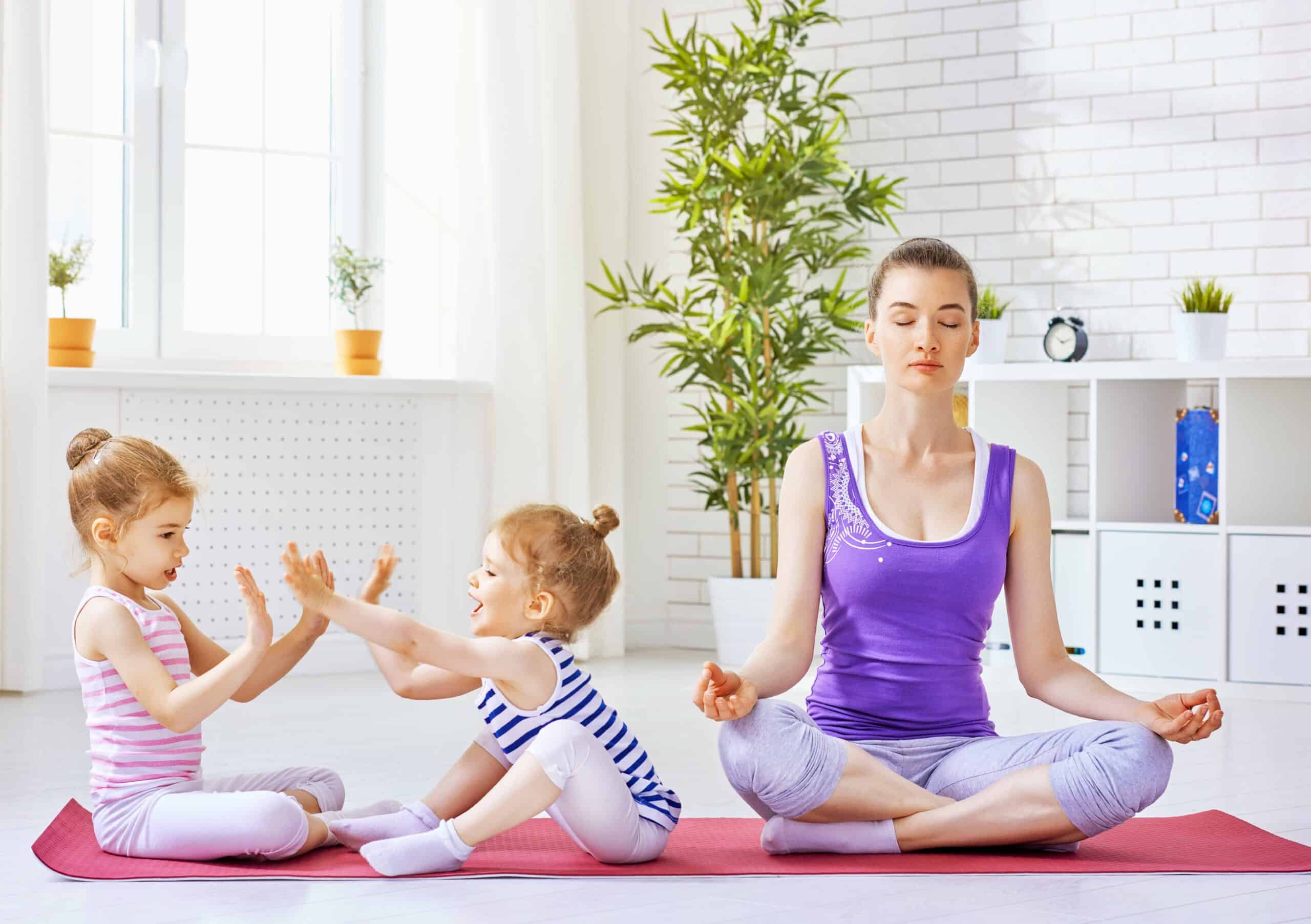
Mindful Language in Everyday Conversations
One way to incorporate mindfulness into your parenting is by using mindful language in everyday conversations with your child. This means being present and fully engaged in the conversation, listening to their thoughts and feelings without judgment.
Avoid using phrases like “hurry up” or “be more careful” which can create stress and anxiety in your child. Instead, try using language that encourages awareness such as “Do you have everything you need?” or “Notice what’s around you right now, are you safe?”.
By modeling mindful language, you can help your child become more aware of their thoughts, emotions, and surroundings, leading to better communication and problem-solving skills.
Modeling mindfulness through actions is also important. Take time to engage in activities that bring you joy and make you feel present, whether it’s gardening, reading, or practicing yoga. Reduce your screen time and bring your awareness to other activities that involve your five senses.
This will not only benefit your own health but also show your child the importance of self-care and being present in the moment.
Overall, incorporating mindfulness into parenting takes patience and understanding.
Mindfulness Activities for Kids
Engaging children in interactive mindfulness activities is a delightful way to introduce them to the practice. These activities can be tailored to suit elementary school students (6-12 years) and provide them with practical tools for mindfulness.
There are tons of free mindfulness activities for kids. Here are a few to get you started.
Mindful Breathing
Teach kids simple breathing techniques, such as “balloon breaths” or squaring breathing, to help them anchor their attention and find moments of calm. Encourage them to focus on their breath as it goes in and out, noticing the sensations in their body.
Use this list of breathing exercises for kids that are great for any age group.
Sensory Activities
Encourage children to engage their senses mindfully, such as exploring nature, savoring flavors, or paying attention to the textures and sounds around them. This helps them develop a greater appreciation for what is right in front of them, and in the world around them.

Mindful Eating
Engage kids in the practice of eating with awareness, encouraging them to savor each bite, notice the flavors and textures, and appreciate the nourishment their food provides. This helps them develop a healthy relationship with food and cultivate gratitude for the nourishing meals they enjoy.

Gratitude Journaling
Foster gratitude and positivity by encouraging children to keep a gratitude journal, where they can reflect on things they are thankful for each day. This practice helps them cultivate a positive mindset and develop an appreciation for the little joys in life.
Try this gratitude journal for kids to get started.
Practice Yoga
Yoga is a great activity for kids to do alone or with friends. It promotes physical health while also incorporating awareness through breathing and focusing on the present moment. Encourage children to try out different yoga positions and have fun exploring their bodies and minds in a new way!
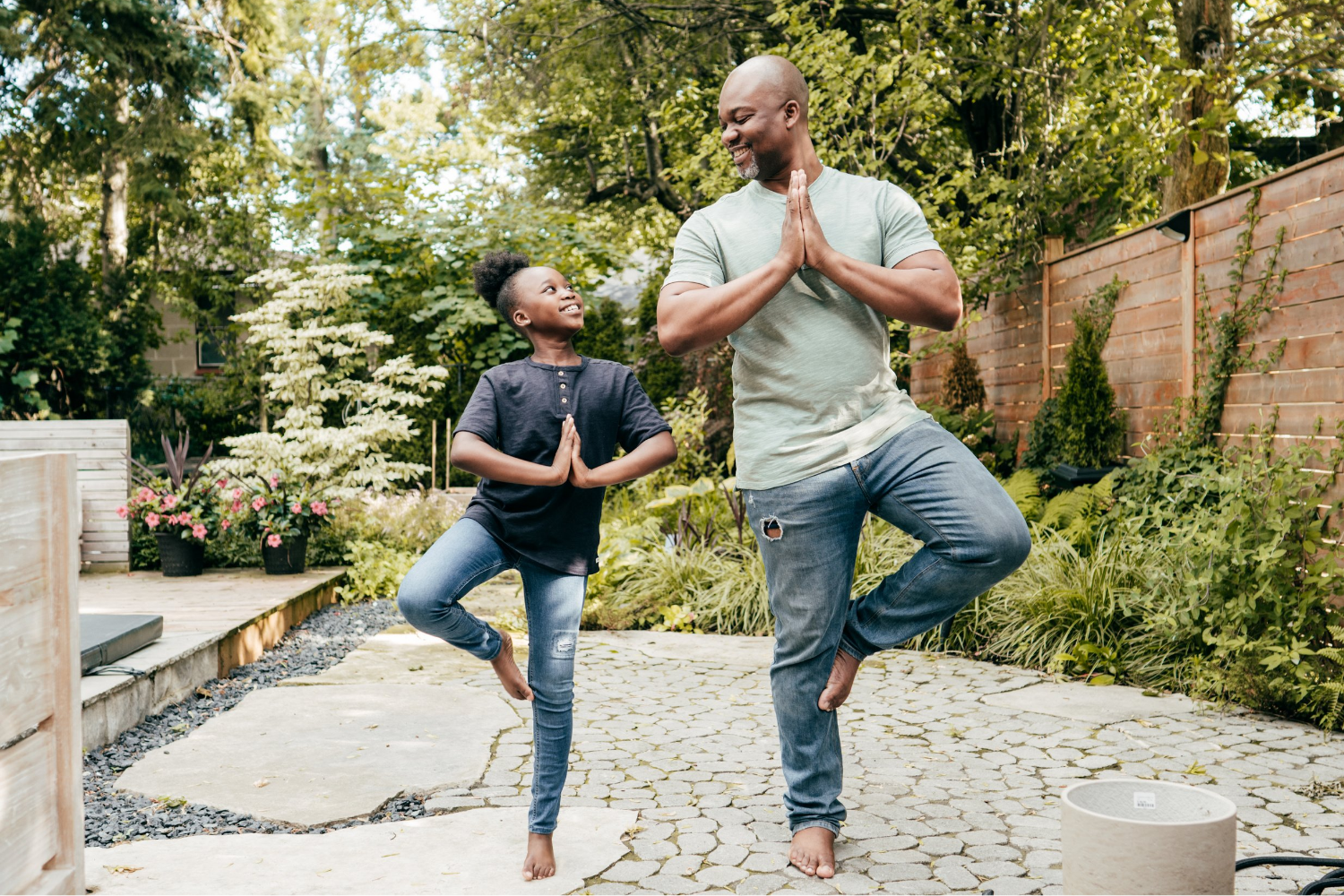
These animal poses are a great way to introduce mindful posing to younger kids especially.

Play “I Spy” using colors, shapes or textures
Take a mindful nature walk outside and notice the different smells, sounds, and sights around you. Use your five senses to fully integrate your experience in the world.
You can also play indoors and be specific about what you describe to your kids. Let them really look around and use learning questions to figure out what you see!
Mindful Mandalas
Have kids draw something they see in nature or create a mandala with natural materials like leaves, stones, and flowers.

Mindful Coloring
Or try some ready-made mindfulness coloring pages. Encourage them to focus on their drawing, being careful to start in the middle and work their way out. Add in patterns for more mindful focus.

Addressing Challenges and Misconceptions
It may be that you come against roadblocks in your journey to teach children how to be mindful.
To fully embrace mindfulness for kids, it’s essential to address common challenges and misconceptions. By understanding these challenges, you can provide the necessary guidance and support.
Here are some key points to consider:
Mindfulness is Not a Religion
Mindfulness and meditation both have roots in many different spiritual practices, but they are not exclusively linked to any one religion. The practices of chanting and humming are more closely linked to some religions, but these elements do not have to be used with practicing daily mindfulness exercises with kids.
It is Not Too Complex for Children
While mindfulness may initially seem challenging for kids, age-appropriate activities and guidance make it accessible and enjoyable. Break down mindfulness practices into simple steps and provide support as needed.

You Don’t Need a Lot of Time
Even brief moments of mindfulness can have a significant impact. Encourage children to pause, breathe, and tune into the present moment, no matter how busy they may be. Emphasize that mindfulness can be practiced anywhere, anytime.
Mindfulness Training is Not Hard or Expensive
Contrary to popular belief, mindfulness training does not require expensive classes or equipment. There are many free resources available online, and simple practices like breathing exercises and mindful movement can be easily incorporated into daily life. Encourage children to explore different activities and find what works best for them.
For a comprehensive mindfulness training for all ages, check out Mindful Schools, or the Ultimate Kids Yoga and Mindfulness training.

Relaxation is a Benefit, Not a Goal
While relaxation may be a side effect of practicing mindfulness, it is not the main goal. The primary focus is on developing awareness, attention, and emotional regulation.
Help children understand that being mindful can help them better understand their thoughts and feelings and make more intentional choices in how they react to them.
Mindfulness is Not About Emptying the Mind
Some children may struggle with the idea of emptying their minds, which can create frustration or stress. Clarify that mindfulness is about observing thoughts and feelings without judgment and letting them pass by. Our mind is always filled with thoughts, but our goal is to notice them without judgment.

This is Not a Replacement for Professional Help
It’s essential to note that learning to practice mindfulness is not a substitute for professional help. If a child is struggling with mental health or emotional issues, seek appropriate support from a therapist or medical professional.
Remember to approach these challenges and misconceptions with patience, understanding, and positivity.
A more comprehensive list of the myths of mindfulness and how to debunk them can be found here.
Conclusion
Teaching mindfulness to children is a gift that will benefit them throughout their lives. By fostering calm, focus, and emotional well-being, we empower children to navigate the challenges of the world with greater resilience and compassion.
Start incorporating mindfulness activities into your child’s routine, and witness the transformative power they offer.
- 20 FUN Calm Down Breathing Exercises for Kids (Video!)
- DIY Mindful Zen Garden Craft for Kids
- Quick and Effective Calm Down Strategies for Kids
- 75 Positive Affirmations for Kids: Building Resilience, Kindness, and Self-esteem
- 8 Amazing Videos to Teach and Practice Mindfulness with Kids
- Fall Themed Kids Yoga and Mindfulness: Free Mindfulness Meditation Download
- 6 Ways to Reduce Stress for Kids During the Holidays
- Simple DIY Essential Oils for Kids at Home
- 8 Simple Ways to Teach Mindfulness to Kids
- Enticing Partner Games that Teach Mindfulness for Kids
- Discover the Joy of Parent and Me Yoga for You and Your Child
- How to Make a Mindfulness Glitter Calm Down Jar
- Why You Shouldn’t Believe these 6 Myths of Teaching Yoga to Kids
- Free Mindfulness Meditation Scripts for Kids [Video!]
- Teaching Breathing Exercises with Yoga Poses for Kids
- How To Make Beautiful And Affirming Mindfulness Kindness Rocks For Kids
- Toddler Mindfulness | Meditation Games for Toddlers
- Mindfulness Techniques for Kids Experiencing Stress or Anxiety
- Activities That Help Your Child Develop Small Motor Skills
- 10 Awesome Mindfulness Crafts for Kids of All Ages
- Back to School Yoga and Mindfulness Routines for Kids
- Stress-Busting Hobbies To Promote Mindfulness for Kids
- The Most Fabulous Books for Teaching Mindfulness to Kids
- Using Mindfulness to Empower Kids and Teens
- How to Use Meddy Teddy Yoga Bear to Reduce Anxiety for Kids in Classrooms
- Effective and Simple Ways to Add Mindfulness to Your Kids’ Day
